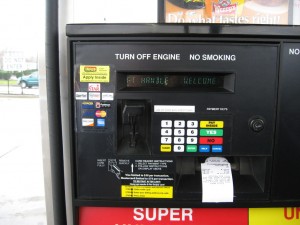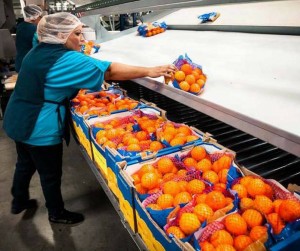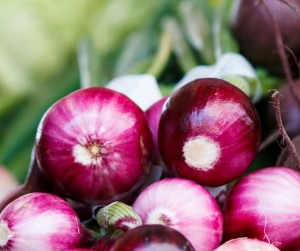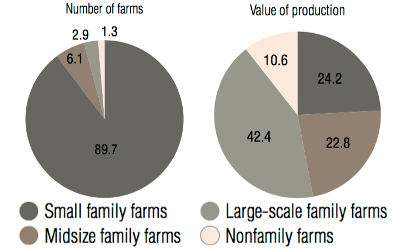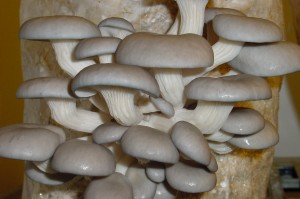And that’s where mushrooms – particularly the oversized portobello – have found their niche. Because they soak up flavors without adding fat or cholesterol, mushrooms have blossomed into a versatile meat substitute.
“Mushrooms are the first vegetable to become center plate, the main course at restaurants,” Murphy said. “It started with portobello burgers and portobello steaks. They became an acceptable alternative for people who want that meaty flavor, that experience of eating a thick steak, but without the down side of red meat. The portobello created a window to introduce other mushroom products.”
Technically, mushrooms are not vegetables (they are varieties of edible fungus, not plants), but they are treated like them, especially in culinary uses.
A mushroom-burger blend will be coming soon to supermarkets, Murphy said. “For people who want to cut back on red meat, they could try a blend burger, 50-50 beef and mushrooms. By cutting meat by 50 percent, you cut fat, calories and cholesterol by 50 percent, too – but you give up nothing on taste. The whole (mushroom) industry is working on this.”
That same concept can be used to stretch meatloaf or meatballs with mushrooms, cutting fat and calories while retaining flavor and mouthfeel.
It borrows from an old idea – mushrooms have always made meat go farther. Ancient Chinese, Greeks and Romans included mushrooms in their diets. Easily preserved through drying, mushrooms could provide additional nutrition during cold winter months. Added to stews or soups, they add heartiness and earthy flavor that mimics meat.
In the United States, almost two-thirds of all mushrooms are grown in Pennsylvania, Murphy said. That state became a haven for mushrooms because of its many caves, a natural habitat for this unusual crop.
“Mushrooms like it dark and damp – just like in a cave,” he said. “That’s why Pennsylvania became the mushroom state.”
While mushrooms are an ancient food, breakthroughs in farming methods have made mushrooms a crop of the future. Developed by European growers, new technology has allowed farms such as Premier Mushrooms to grow more mushrooms faster year-round with less waste.
“Our grow rooms are extremely high-tech,” Murphy said. “There’s only two farms like it in the U.S. (The other is in Maryland.) We’ve been in operation for 10 years and we’ve quadrupled the size of our farm.”
Since its first harvest in 2007, Premier went from 16 growing rooms and 34 employees to 64 growing rooms and more than 250 employees. “We’ve become the largest year-round employer in Colusa County,” he said. “Unlike seasonal crops, we harvest mushrooms every day every week – even Christmas.”
That adds up to 300,000 pounds of mushrooms a week.
Traditionally, mushrooms were grown in coastal areas of California where temperatures hovered around 60 degrees and humidity stayed constant, Murphy noted. “With technology, we can grow anywhere. We control the temperature, humidity, fresh air flow, CO2, light. We can be consistent for our customers.”
The darkened grow rooms contain large aluminum beds, filled 6 inches deep with growing medium – wheat straw layered with composted chicken manure and topped with peat moss.
“Everything on the farm is pasteurized to keep out any bad bugs or bacteria,” Murphy noted. “We steam clean everything (after three grow cycles), which means we can run the farm virtually chemical free.”
Premier grows the three most popular mushrooms: white button, crimini and portobello. All are strains of the same species, Agaricus bisporus.
“The difference between a crimini and a portobello is about three days,” Murphy said. “The portobellos are just big criminis. (Once mushrooms reach a certain stage), they double in size every 24 hours.”
A new mushroom crop is ready for harvest in eight weeks, he added. “Mushrooms follow a schedule. You can time the harvest, from eight weeks out, usually within eight hours. It’s amazing. How many crops can do that?”
Link to story
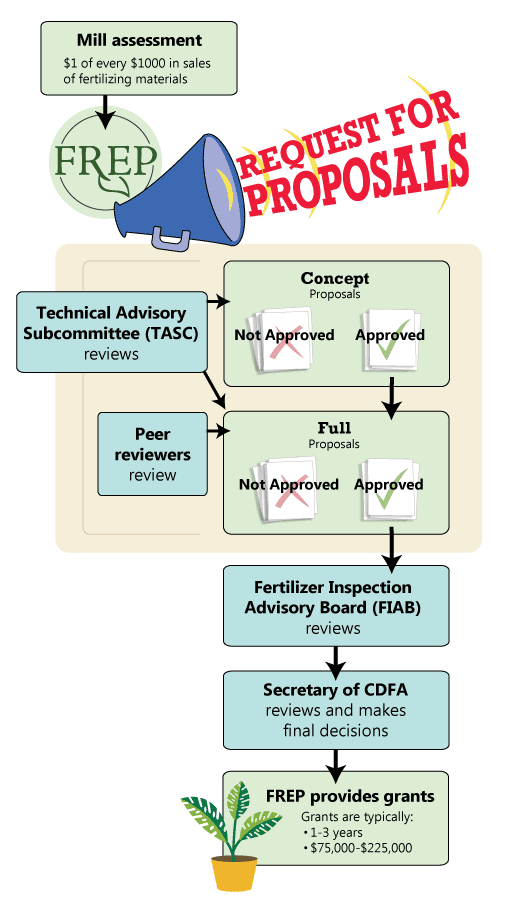 FREP grants are funded by mill assessments on the sales of fertilizing materials. FREP asks for two-page concept proposals, which are reviewed by the Fertilizer Inspection Advisory Board’s (FIAB) Technical Advisory SubCommittee (TASC), a diverse group of experts in California agriculture. TASC determines which submissions will be invited to the second phase: full proposals.
FREP grants are funded by mill assessments on the sales of fertilizing materials. FREP asks for two-page concept proposals, which are reviewed by the Fertilizer Inspection Advisory Board’s (FIAB) Technical Advisory SubCommittee (TASC), a diverse group of experts in California agriculture. TASC determines which submissions will be invited to the second phase: full proposals.


